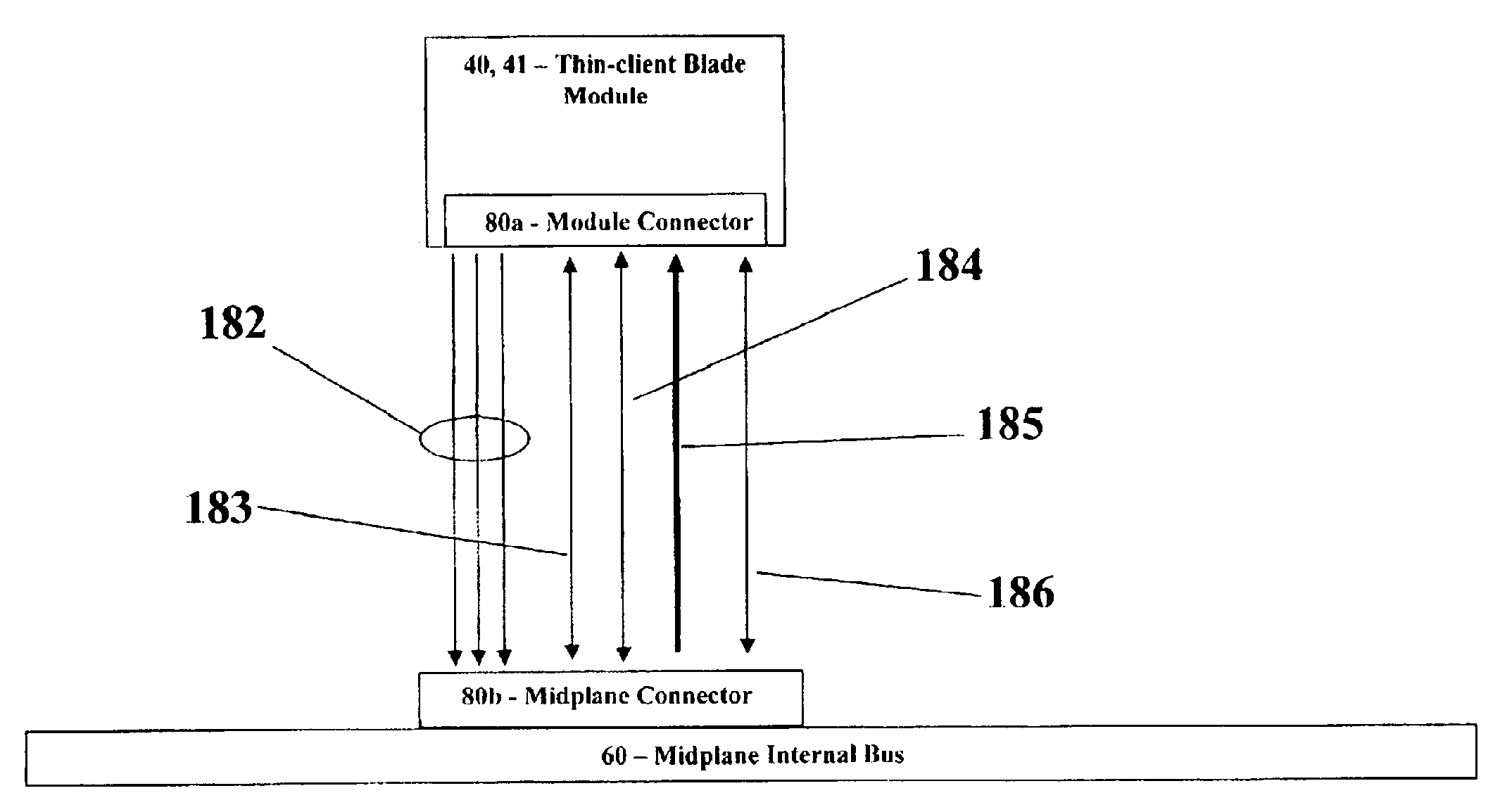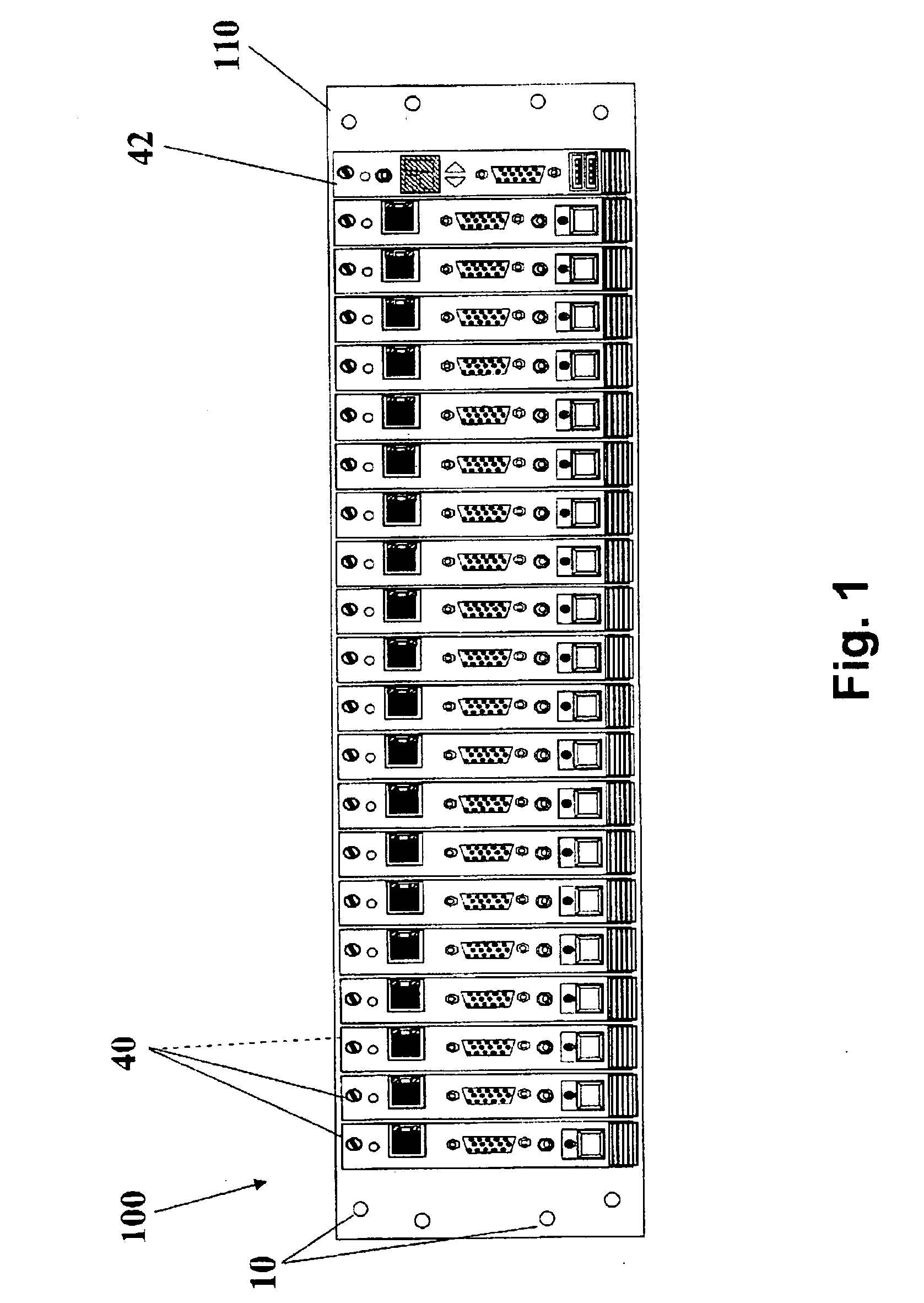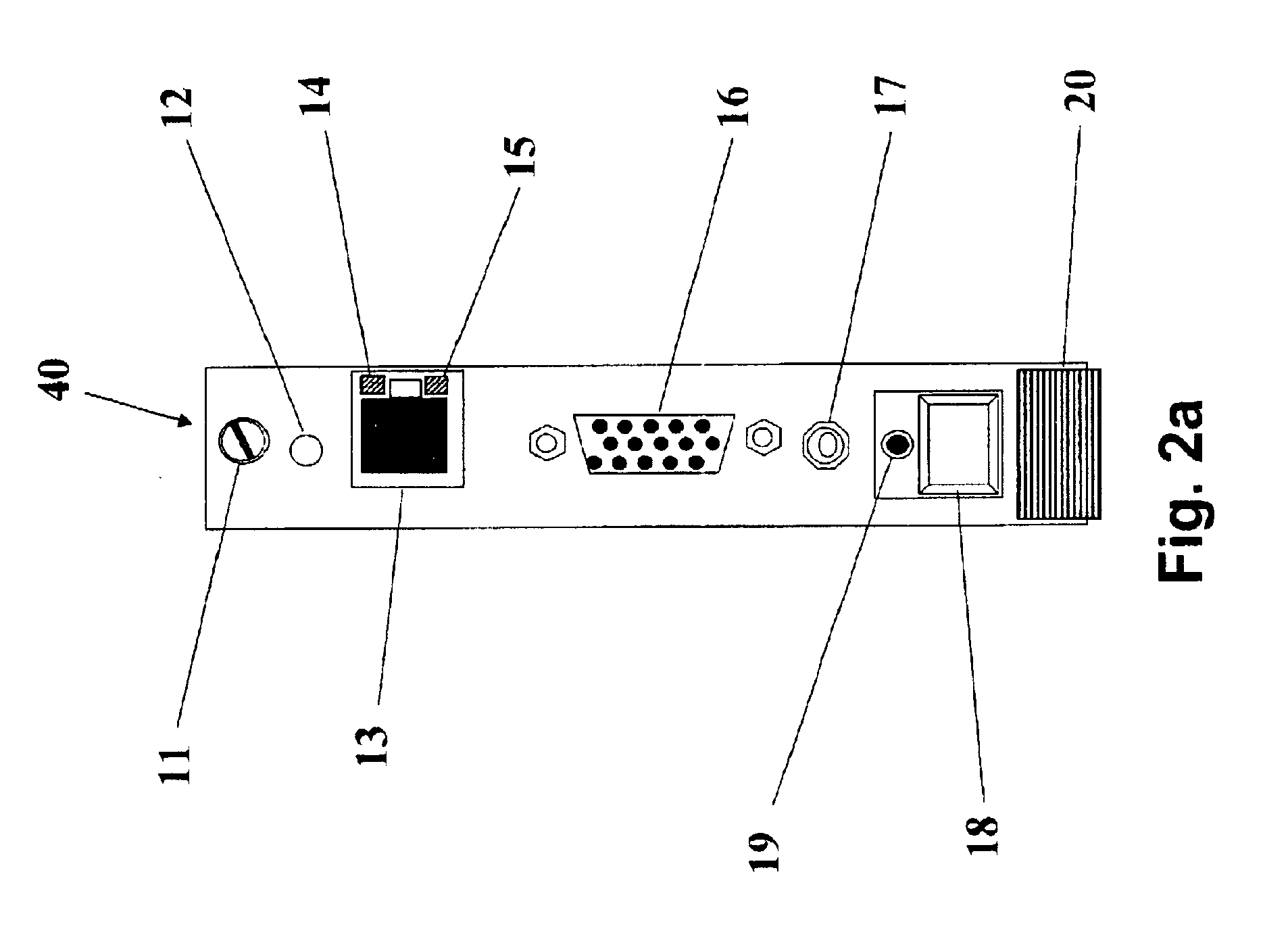Apparatus, method and system of thin client blade modularity
a thin client and modular technology, applied in the direction of electrical apparatus construction details, instruments, support structure mounting, etc., can solve the problems of large organization's typical computer system becoming much more complex and therefore difficult to predict, simulate and test, and the approach could only simulate a small portion of the organization's system, and achieves easy connection and monitoring. , the effect of easy monitoring
- Summary
- Abstract
- Description
- Claims
- Application Information
AI Technical Summary
Benefits of technology
Problems solved by technology
Method used
Image
Examples
Embodiment Construction
[0043] The following detailed description is of the best presently contemplated modes of carrying out the present invention. This description is not to be taken in a limiting sense, but is made merely for the purpose of illustrating the general principles in accordance with the present invention. The scope of the present invention is best defined by the appended claims.
[0044] The foregoing and other objects, features and advantages of the invention will become apparent from the following more particular description of exemplary embodiments of the invention, as illustrated in the accompanying drawings:
[0045] Reference is made to FIG. 1 illustrating a frontal view of an embodiment of a thin-client modular blade system 100. Chassis rack mounting holes 10 are used for securing a chassis 110 to a standard rack. Typically, standard 19″ rack geometry is being used to enable vertical buildup of multiple sets of thin-client modular blade systems 100 and network switches as needed. Chassis ...
PUM
 Login to View More
Login to View More Abstract
Description
Claims
Application Information
 Login to View More
Login to View More - Generate Ideas
- Intellectual Property
- Life Sciences
- Materials
- Tech Scout
- Unparalleled Data Quality
- Higher Quality Content
- 60% Fewer Hallucinations
Browse by: Latest US Patents, China's latest patents, Technical Efficacy Thesaurus, Application Domain, Technology Topic, Popular Technical Reports.
© 2025 PatSnap. All rights reserved.Legal|Privacy policy|Modern Slavery Act Transparency Statement|Sitemap|About US| Contact US: help@patsnap.com



